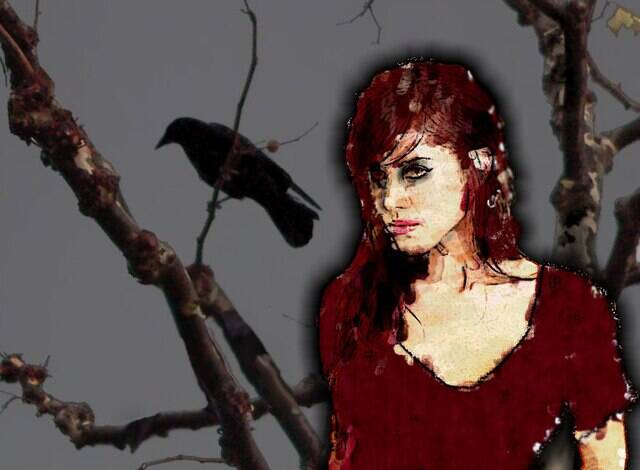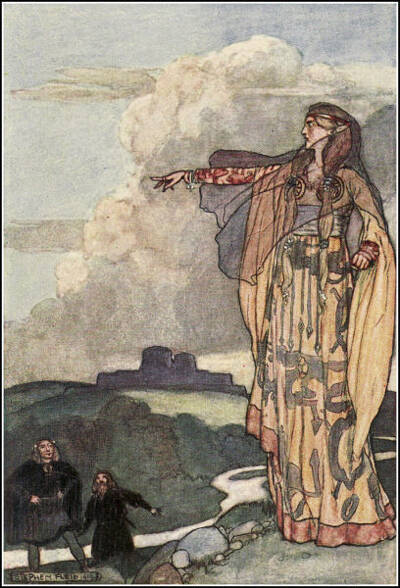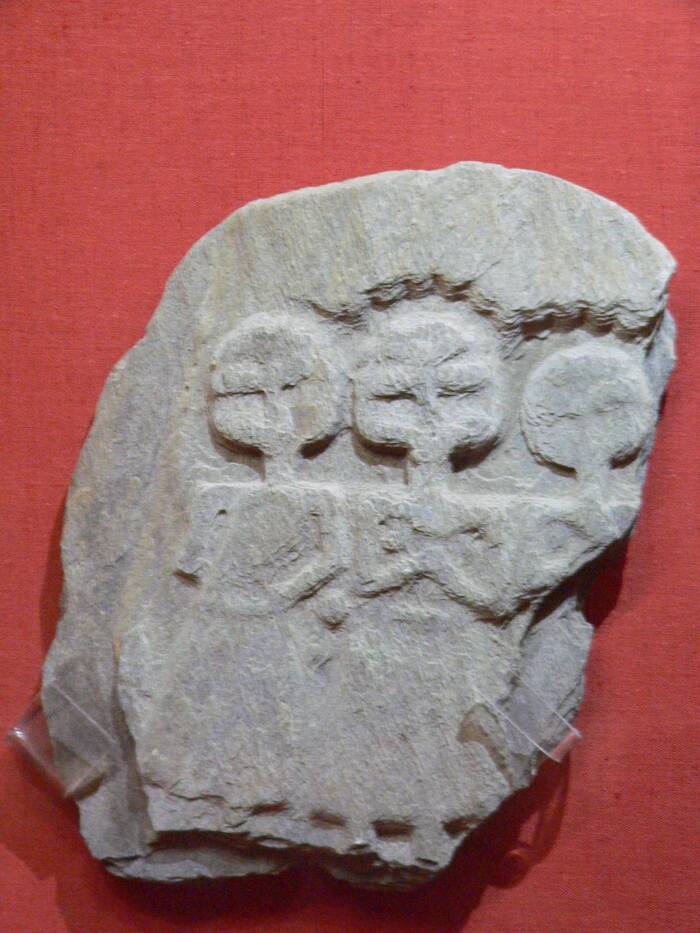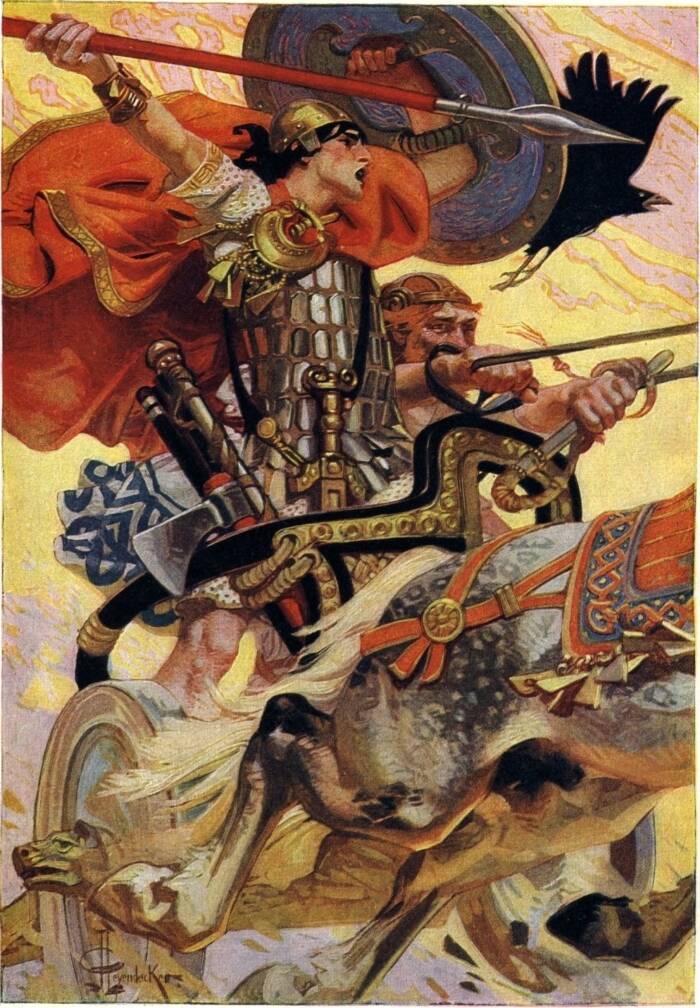Known as the “phantom queen” or the “queen of nightmares,” the Morrígan is said to be a fearsome shapeshifting goddess with the power to predict when warriors will die in combat.

André Koehne/Wikimedia CommonsThe Morrígan is a fearsome goddess of war in Irish lore.
Celtic folklore tells of a mysterious war goddess known as the Morrígan. A fearsome figure said to have the ability to predict the deaths of warriors and shift the outcome of battles in her favor, the Morrígan’s name appropriately translates to “phantom queen” or “queen of nightmares.”
The Morrígan is sometimes represented as a “triple goddess” comprised of three distinct entities wrapped into one. This multifaceted figure is associated with the terror, bloodshed, and frenzy of war, but is also venerated for her protectiveness over the motherland and its sovereignty.
A gifted shapeshifter, the Morrígan can appear as a hag or a beautiful woman and other times as a crow, she-wolf, horse, cow, or eel. But in every incarnation, she represents the final fate that awaits us all.
The Murky Origins Of The Morrígan
To understand the Morrígan, it’s important to understand that Iron-Age Celts idealized war. Women fought in battle as warriors alongside men through the 7th century C.E. Protecting the homeland was a huge point of Celtic pride — and the Morrígan reflects these values.
The first known written mention of the Morrígan appears in the seventh century C.E.’s O’Mulconry’s Glossary. However, it’s likely that stories of the goddess circulated before this.

Ivy Close Images / Alamy Stock PhotoThe Morrígan appears in many forms throughout Celtic lore, including that of a beautiful young woman.
The Morrígan’s origins can also be traced to the megalithic Cult of the Mothers. Starting around the first century C.E., this cult involved the worship of a number of female deities who were commonly represented as triple goddesses. Often, such triple goddesses were venerated as protectors or providers of good fortune.
In Celtic culture, a triple goddess typically comprises three goddesses representing three phases of womanhood: a maiden, a mother, and a hag. The Morrígan herself is sometimes represented as a distinct standalone goddess, and other times as being made up of three entities.
The three goddesses that make up this trinity are Badb, Macha, and Nemain.
The Three Sisters
The entities associated with the Morrígan are often referred to as sisters. They are considered to be the daughters of Ernmas, the Irish mother goddess.
These three sisters loosely represent three aspects of war: death, territorial sovereignty, and fear.
Badb is associated with bloodshed, fate, and death. She often appears in the form of a crow, flying over battlefields and sowing fear and confusion into the hearts of her enemies, helping her favored side secure victory. Some depictions show her escorting souls to the afterlife, and Badb’s cries are also said to predict a notable warrior’s death, leading some to compare her to the banshee.

Public domainMacha, one of the three entities that make up the Morrígan.
Macha, meanwhile, represents independence or sovereignty. In fact, she is sometimes seen as an embodiment of the land itself; her name is etymologically linked to the Scottish Gaelic word machair, which refers to a fertile plain. She’s also associated with horses, and sometimes appears as one. A fierce and ruthless protector of the land, Macha is known to rain down justice on those who oppose her.
Nemain personifies the havoc, madness, and terror of war. Her name means “frenzy,” and indeed, she is known to incite panic in the enemy. She is also known to cull the weak in battle — and then comfort them as they die.
Sometimes, another goddess named Anand takes Nemain’s place as the third Morrígan entity. A mother goddess, Anand is, like Macha, associated with sovereignty and the land. Sometimes, the Morrígan herself is represented as one of the three sisters. This lack of clarity regarding the relationships between these entities only adds to the air of mystery surrounding the Morrígan.

Mary Harrsch/FlickrA plaque discovered on the Cleveland Walk in Bath, perhaps showing a trio of goddesses.
Tales Of The Morrígan In Irish Lore
The Morrígan has appeared in a number of stories throughout ancient Irish texts. And because she is the manifestation of raw carnage and war, a lot of them are pretty hardcore.
According to one legend, the Morrígan played a key role in the Battle of Moytura. During this battle, the Tuatha Dé Danann — the race of deities to which the Morrígan belongs — sought to seize land from a mythological people called the Fir Bolgs.
Before the battle began, the Morrígan used dark sorcery to rain down blood and fire upon the Fir Bolgs. As reported in Stephanie Woodfield’s Celtic Lore & Spellcraft of the Dark Goddess: Invoking the Morrigan, they were unable to move for three whole days and nights, giving the Tuatha Dé Danann a distinct advantage and allowing them to claim control of Ireland.
The Morrígan’s powers were so great that she was ultimately the one to vanquish Ireland’s greatest mythological superhero, Cú Chulainn.

Wikimedia CommonsThe Irish folk hero Cú Chulainn. The Morrígan, pictured in the upper right corner in the form of a crow, helped bring about his demise.
According to legend, the goddess once appeared to Cú Chulainn as a beautiful woman and attempted to seduce him. He rejected her advances, telling her he “does not have time for women’s backsides,” according to the World History Encyclopedia.
Enraged, the spurned goddess vowed to get revenge. She then used long-game sorcery to trick Cú Chulainn, appearing in a variety of forms — an eel, a wolf, a cow, and an old woman — and hindering him in battle at every turn. Finally, she appeared to him as the hooded crow of death and perched on his shoulder, signifying his impending demise — and he was soon mortally wounded in combat.
The Morrígan also appears in the Second Battle of Magh Tuired. According to legend, the goddess promised the king of the Tuatha Dé Danann that she would cast spells to bring about the destruction of Indech, the Fomorian king, whom she’d deprive of “the blood of his heart and the kidneys of his valour.”
Stories say that once this task was complete, the Morrígan carried two handfuls of Indech’s blood and put them in the river Unius.
The Morrígan’s Enduring Legacy

LindaRain714/FlickrA ship named after the Morrígan as it appears in Assassin’s Creed: Rogue.
Today, the Morrígan remains a popular deity in Irish mythology. This goddess of war’s fearsome, multifaceted nature makes her prime fodder for storytelling — even in pop culture.
In the battle video game Smite, the Morrígan is a playable character, appearing as an enchantress with shapeshifting powers. A version of the Morrígan also appears in the Marvel comic Earth 616. And in Assassin’s Creed: Rogue, she serves as the namesake of the protagonist’s ship.
Today, the Morrígan remains a powerful symbol of death and the circle of life, giving her lasting appeal that may inspire many more generations of storytellers.
After learning about the Morrígan, discover the story of Scathach, the legendary warrior woman of Irish myths. Then, learn about Huitzilopochtli, the Aztec god of war and human sacrifice.





